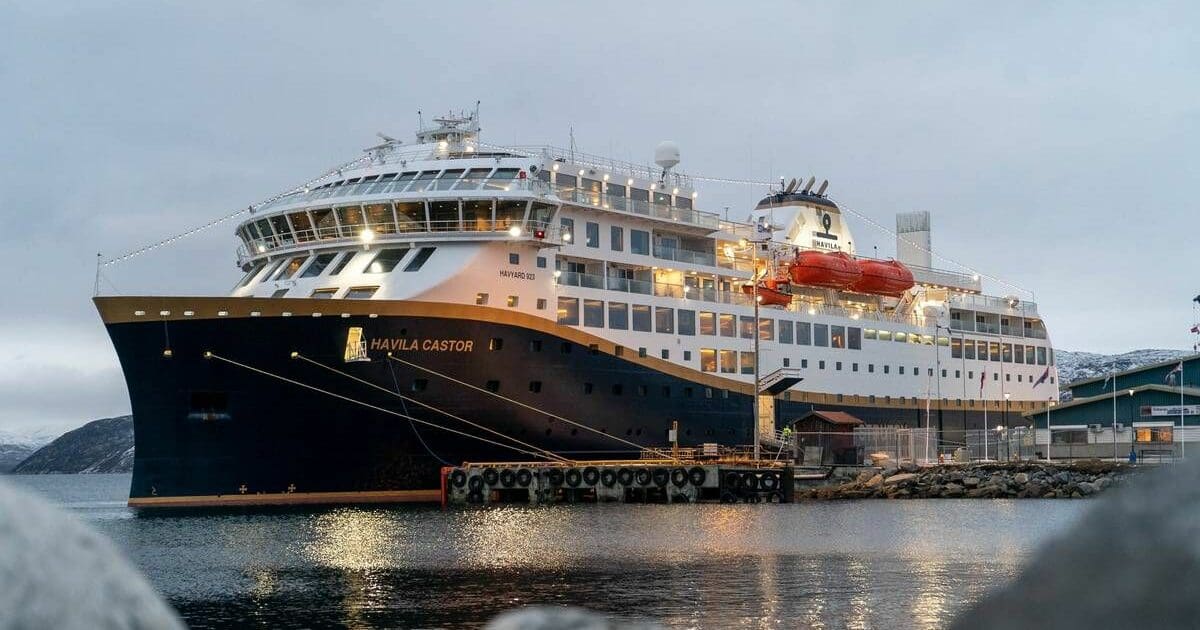The Norwegian shipping company, Havila Kystruten, has banned electric, hybrid, and hydrogen cars from its ferries. After a risk analysis, it was concluded that the risk to the safety of the shipping fleet was too significant. If a vehicle catches fire, the fire can no longer be extinguished.
The risks for ships from the transport of Electric cars (EV) have been discussed since the “Felicity Ace” sank off the Azores, Portugal, last February. E-vehicles on board had caught fire. The fire could not be extinguished. Finally, the colossal ship sank with thousands of electric cars, including Porsche and Bentley “green” vehicles.
Capt. Rahul Khanna, global head of marine consulting at Allianz (AGCS), a marine insurance specialist, explains that the problem with EVs is that lithium-ion batteries in the cars can actually propagate the fire, igniting more vigorously as compared to conventional cars. A single vehicle fire could prove catastrophic.
E-cars are a danger for ship passengers
According to a report by the TradeWinds shipping news service, Havila’s Chief executive Bent Martini said the risk analysis showed that the fire in an electric car required a particularly complex rescue operation. The crew on board could not afford this. Passengers would also be at risk. This is different for vehicles with combustion engines. A possible fire is usually easy to fight by the ship’s crew.
After the sinking of the “Felicity Ace,” Greenpeace also warned against e-cars on ships: “In general, electronic components and especially electric vehicles pose a risk for every transport.”
Havila travels the so-called mail ship route along the coast of northern Norway. The tours are essential for Scandinavian passenger and cargo traffic and are also very popular with vacationers.














This only makes sense. Batteries contain stored energy requiring nothing external for releasing it. Gasoline, in contrast, must be combined with oxygen to burn, so by depriving a gasoline fire of oxygen, it is extinguished. A battery fire can’t be extinguished by any means; it will only stop once all the stored energy is released.
I suggest that the shipping company instead reserve a few spaces for electric cars right along the rails, with hinged gates added, so that if an electric car catches fire, the crew can have the pleasure of pushing it overboard.
Very dangerous. The lithium of the batteries reacts with the water to form oxyhydrogen gas. In case of explosion of this gas, the ship could be leaked or set on fire.
Good move.
So glad the EV is sinking. Nothing I enjoy more than pi$$ing around with my pals, jawing about our V12s, gears and such. The guy who bought the EV just doesn’t fit in somehow, trying to impress us with kilowatts and stuff. What a bore he’s suddenly become.
As a former professional fire fighter, I can share that the main issue with an EV fire is not just the release of free radicals and other toxic carbon compounds from the fire’s chemical chain reaction, it is the lithium batteries once an ignition occurs. Lithium is an oxidizer and application of water only super increases the combustion reaction. Smothering the fire by fire blanket, if you can get close enough to it , or burying it will work, however are not practical at sea. As for the difficulty of shipboard firefighting and car carriers, just do a web search and you will be surprised at at how often these occur with combustion engine vehicles on board. Even these are difficult to control.
https://www.steynonline.com/12856/a-sennight-of-steyn-september-25-october-1
Book: ‘The Deliberate Corruption of Climate Science’
Book: ‘Human Caused Global Warming, the Biggest Deception in History
https://www.technocracy.news/dr-tim-ball-on-climate-lies-wrapped-in-deception-smothered-with-delusion/
https://www.youtube.com/watch?v=tPzpPXuASY
https://www.technocracy.news/tim-ball-the-evidence-proves-that-co2-is-not-a-greenhouse-gas
https://www.youtube.com/watch?v=qOEFQDcT_lM
Tim passed away on Sept 24th 2022.
In our fire department we dread these EV fires. Way too difficult to extinguish.